Sarees are a timeless piece of Indian clothing that can be worn on any occasion, whether it’s a formal event or a family function. With so many different types of sarees available, it can be difficult to know which ones you should invest in. This article will guide you through six different Types of sarees that should be in your wardrobe so that you can be sure to have the perfect one for any occasion!
Contents
Where to Wear a Saree?
There are many different types of sarees, and each one is meant to be worn in a different type of setting. Formal sarees are typically worn to weddings or other special occasions.
They are often very ornate, with intricate designs and embellishments. Casual sarees are meant to be worn in more casual settings, such as to work or on a night out with friends.
They are usually less ornate than formal sarees and come in a variety of colors and patterns.
Wearing the right type of saree for the occasion is important to look your best. Formal sarees should only be worn for formal occasions, as they can look out of place in more casual settings.
Casual sarees can be dressed up or down, depending on the occasion. Choose a color and style that compliments your outfit and makes you feel confident.
Types of Sarees based on Regions
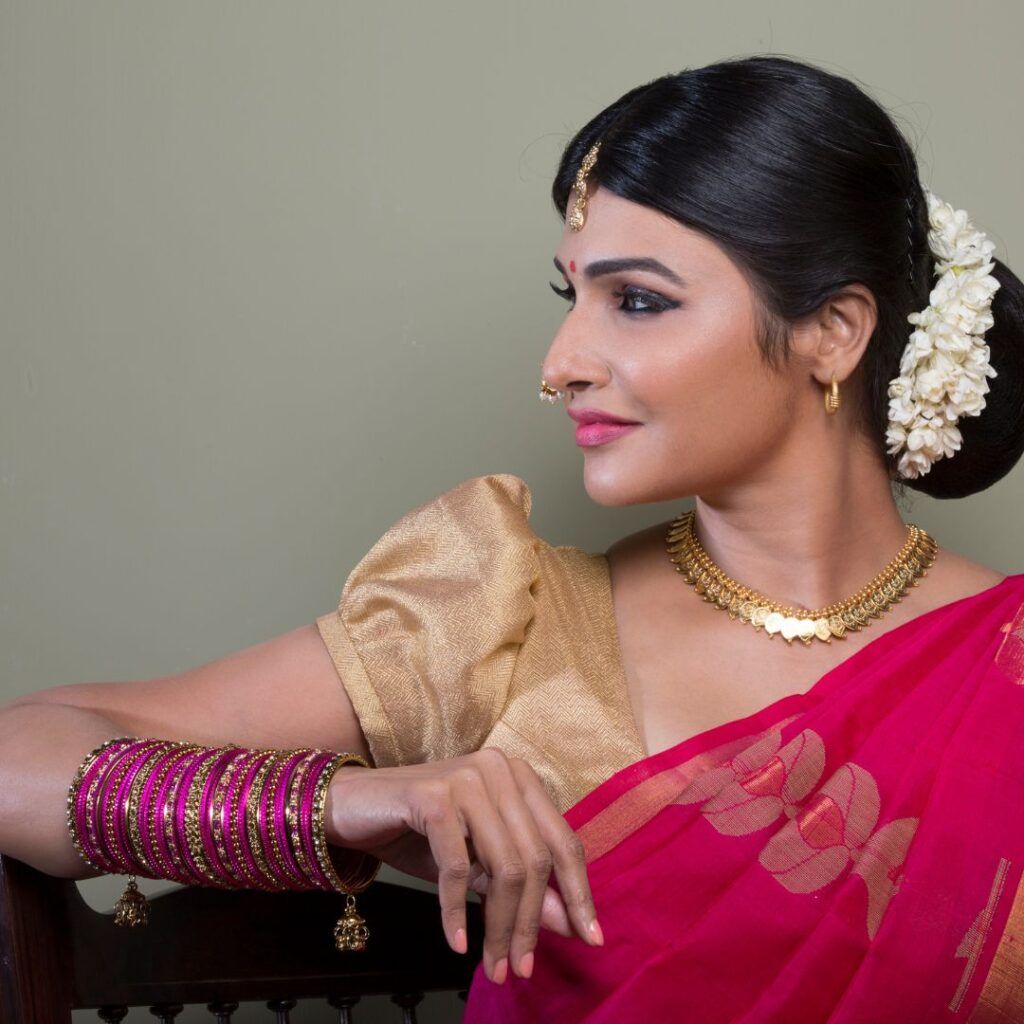
There are many different types of sarees that you can choose from. The most popular type of saree is the traditional Indian saree.
These sarees are usually made from a light, sheer fabric and are decorated with intricate embroidery. They are typically worn with a blouse and petticoat.
Another popular type of saree is the Bengali saree. These sarees are made from heavier fabric and are often brightly colored.
The Gujarati saree is another type of saree that is popular in India. These sarees are similar to Bengali sarees, but they are typically decorated with mirrorwork or other embellishments.
Finally, the South Indian saree is a type of saree that is popular in the southern states of India. These sarees are typically made from silk or cotton and are very brightly colored. They are also draped differently than other types of sarees and are often worn with a blouse and petticoat.
The Six Types of Sarees You Need in Your Wardrobe
1.kanchipuram sarees
Kancheepuram/Kanchipuram sarees are a type of sari that is popular in South India. They are usually brightly colored and have a flowy, feminine style.
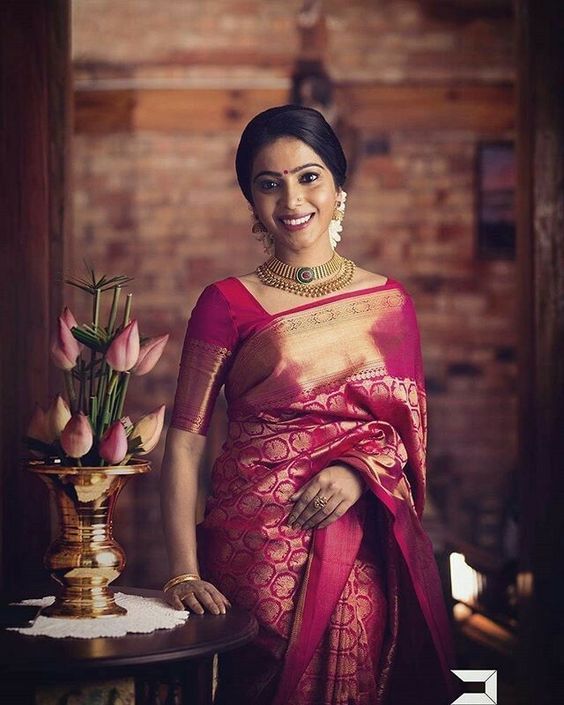
If you’re looking for a versatile, comfortable, and flattering sari, a Kancheevaram saree is a great option. They can be dressed up or down, and they can be worn with anything from a casual outfit to a formal dress.
If you’re interested in trying out a Kancheevaram saree, be sure to find one that’s made by a reputable vendor. There are many low-quality versions of this style of sari on the market, so it’s important to choose wisely.
Wear it: Kanjeevarams are generally silks, but can also be made of cotton. They are well-loved by brides in India and are a must-have in your wardrobe.
2. Banarasi Silk Sarees
Characterized by the interwoven floral and leaf design, the Banarasi silk saree is a traditional art piece. The fabric embodies centuries of heritage in weaving exquisitely embroidered fabrics.
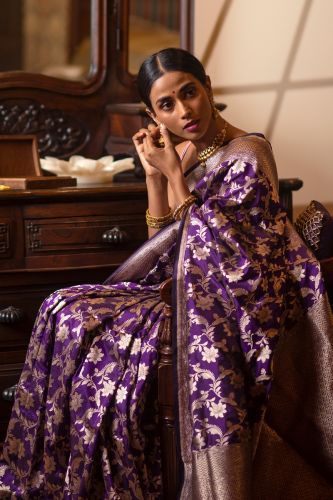
With a legacy passed down for generations, it has become a staple in garment making. These carpets of silk arrive in beautiful colors and designs and are available at any wedding event as a classic addition to the textile industry.
Wear it: Indian women carry intricate saris which add elegance to their outfits, around for many years. You can either wear traditionally or give it a contemporary twist.
3. Kalamkari Sarees
The Kalamkari saree is a traditional style of saree, using a specific type of art. The word “Kalamkari” literally translates to pen-craftsmanship. The art in this fabric is a blend of color and form, telling a story or depicting a scene
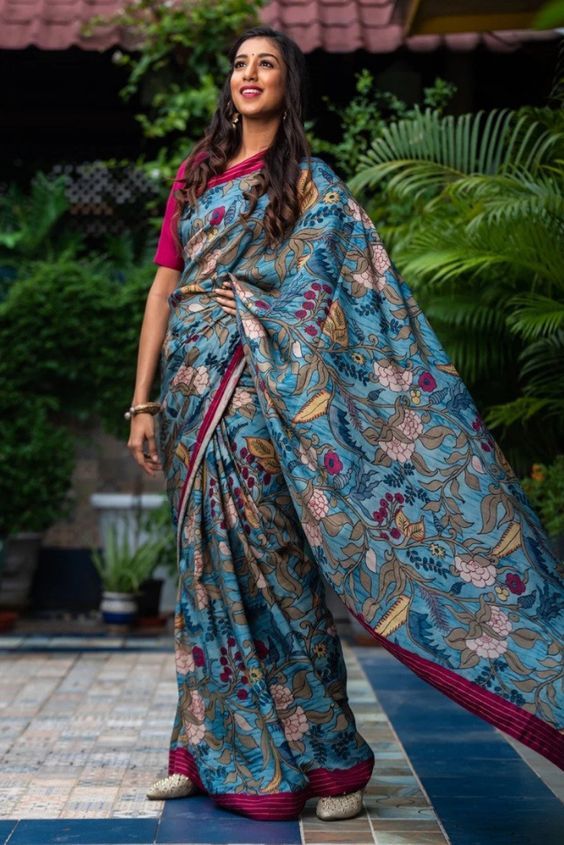
Wear it: These saris are great for you if you want a modish, Indie-chic look. They are simple for day wear, but can also be used for festivals and functions.
4. Paithani Sarees
Paithani sarees are famous for their intricate designs, bright colors, and high-quality fabric. The most distinguishing feature of a Paithani saree is its sloping or oblique border decorated with peacock and flower designs. You can find Mughal influences in bird motifs such as peacocks and parrots.
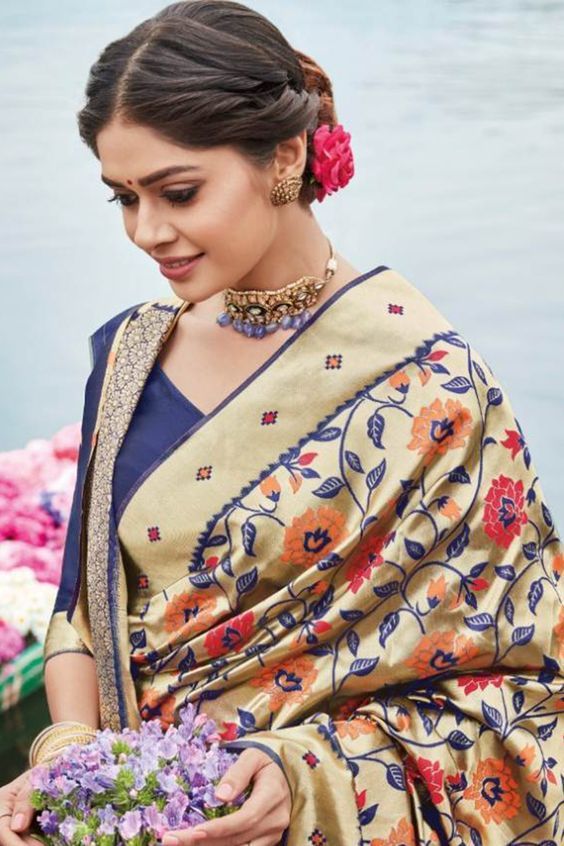
Wear it: These traditional Indian wedding and house warming clothes can be used for your special occasion such as weddings or Diwali parties. The clothes are conventionally worn, so they would be a good choice for elaborate events, as well as being traditionally wedding and house warming clothes.
5. Pochampally Saree
Pochampally fabric, or the Pochampally Ikat, comes from Telangana. The production of this fabric requires skilled labor and expensive materials. Originally, it was made in Central Asia before producing its way to Okinawa Island and parts of Africa. Although the production capabilities differ, the prints on the Pochampally are consistently elaborate and make beautiful representations of Indian culture.
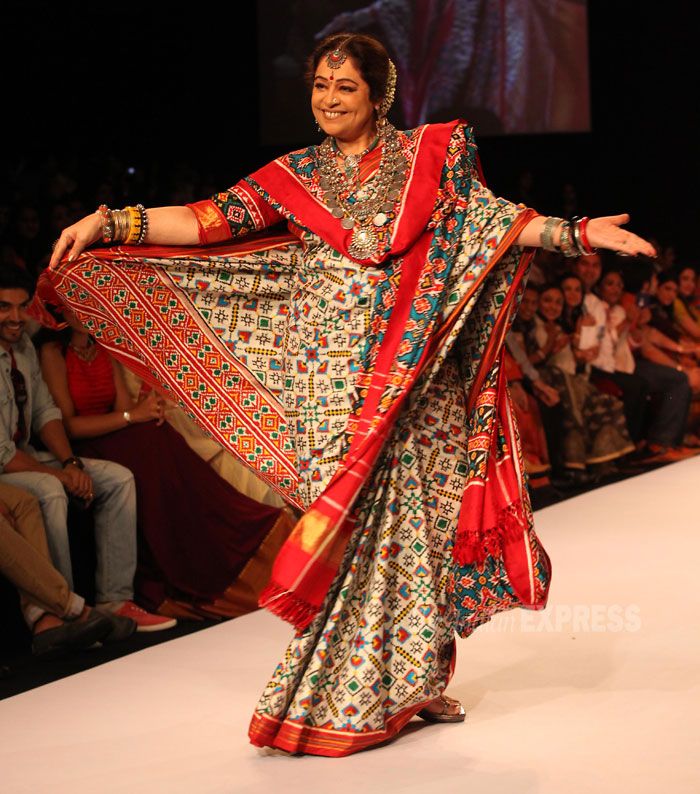
Wear it: This Pochampally saree is comfortable and luxurious, the perfect way to break into wearing a silk saree if you don’t usually wear them. It can go great with weddings with minimal makeup look.
6. Uppada Sarees
Uppada Sarees are this generation’s Jamdanis, with Indian influence and elegance. These finely made south Indian sarees are lustrous, smooth in texture, and full of intricate designs. They have appealing colors, and patterns and more than often have silk threads to complement the fabric’s feel.
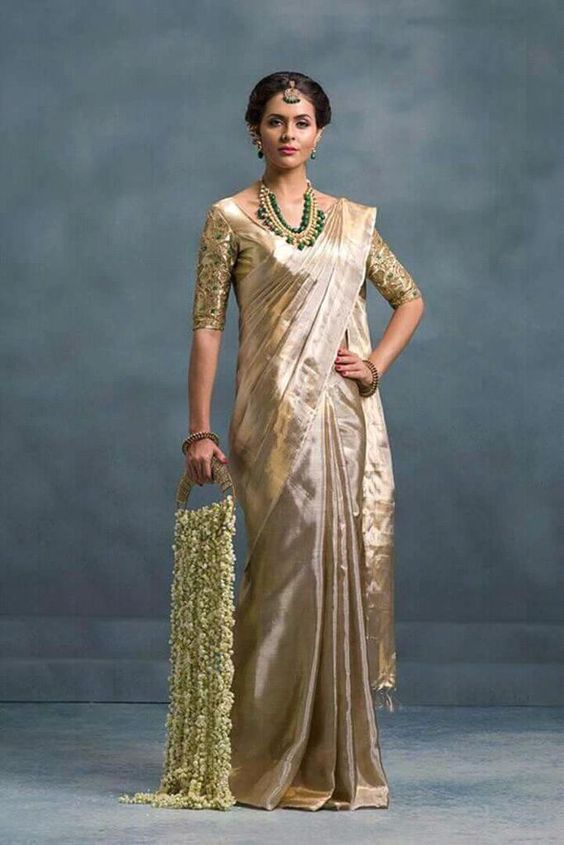
Wear it: Uppada Sarees can be worn to formal events in the day time like a function or at night time for a wedding.
How to Style Different Types of Sarees
The saree is a timeless garment that can be styled in many different ways. Depending on the occasion, you can choose to wear your saree in a traditional or contemporary style.
To style a saree traditionally, you will need to wear a petticoat and blouse. The petticoat helps to hold up the saree and the blouse covers your torso.
You will need to wrap the saree around your body and tuck it into the petticoat at your waist. Then, you will need to drape the end of the saree over your shoulder.
Source:
Sarees for every occasion
They are:
- The classic saree: This is a timeless style that can be worn on any occasion. It is usually made of lightweight fabric like cotton or silk and can be either plain or printed.
- The party saree: This is a more flashy and glamorous style of saree that is perfect for special occasions. It is usually made of heavier fabric like velvet or brocade and is often embellished with sequins or beads.
- The bridal saree: This is an elaborate and beautiful saree that is worn by brides on their wedding day. It is usually made of a heavy fabric like silk or velvet and is adorned with intricate embroidery, sequins, and beads.
- The casual saree: This is a relaxed and comfortable style of saree that can be worn on any day-to-day occasion. It is usually made of lightweight fabric like cotton or linen and is either plain or printed.
- The ethnic saree: This is a traditional style of saree that is typically worn on festive occasions.
How to Care for your sarees?
Wearing sarees is a beautiful and fashionable way to show off your figure. However, like any article of clothing, they require some care in order to look their best. Here are three tips that will help you take good care of your sarees:
- Always hand-wash your sarees in cold water with a mild detergent.
- Do not soak them in a tub or use fabric softener – these chemicals can damage the fabric.
- Hang them to dry – using a hanger keeps the fabrics from stretching and becoming brittle.
Conclusion: Different Types of Sarees
A sari is an incredibly versatile piece of clothing, able to be styled in a variety of ways to suit any outfit. However, if you are looking for a more traditional style that can be worn at any time of the year, here are six types of saris that should be in your wardrobe.
Click here to read my articles

